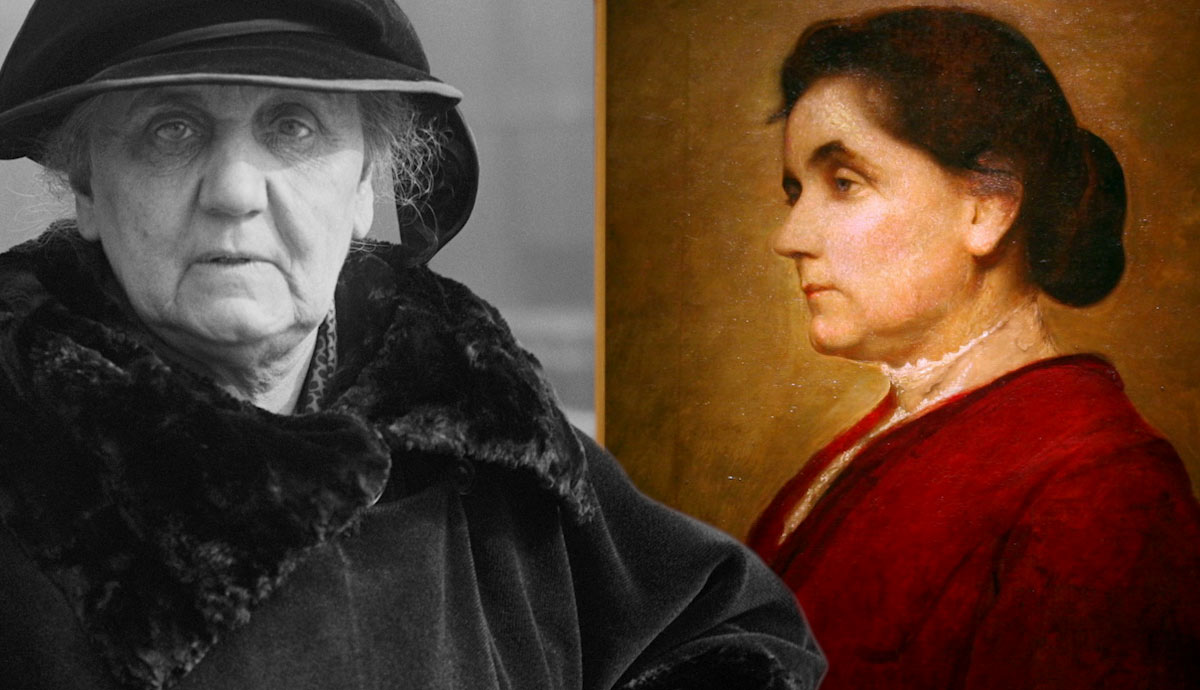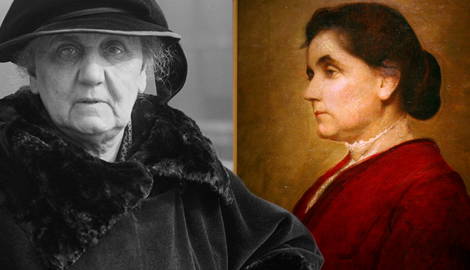
In 1931, Jane Addams was awarded the Nobel Peace Prize, becoming the first woman from the United States to receive this honor, and the second ever in history. She wrote over 500 articles and twelve books. She applied her philosophy into direct practice through various projects to help immigrants, women, and the poor. She is undoubtedly important for the canon of social workers and classical American pragmatists but is inequitably not included as much as she once was. This article aims to celebrate her prominence by divulging her key progressive contributions.
Who Was Jane Addams?

Addams was born into a middle-class family in 1860 in Northern Illinois. She was one of eight children, but only four reached adulthood. Sadly, her mother died just two years after her birth, but Addams developed a strong bond with her father. John H. Addams and Abraham Lincoln were her heroes and moral exemplars. Her father and Lincoln were, in fact, friends—her father was a Civil War veteran and local politician who advocated for abolition.
Certainly, these two inspired her, along with the historical context, to be a radical progressive social reformer. These efforts toward reform focused on women’s rights, aiding immigrants and the poor, and pacifism. This all came together in one of her biggest projects: the Hull House. The Hull House brought Addams to prominence for her involvement in public projects, something that was a rarity for women at the time. In 1889 Addams, along with some others (especially her close companion Ellen Gates Starr), leased this mansion in a predominantly immigrant neighborhood in Chicago to improve living conditions. In some ways, it was always a work in progress; she focused on listening to the needs of others and made changes where needed. It quickly grew into a massive enterprise—eventually comprising thirteen buildings—where the poor could thrive, especially immigrants and women.

She took on all sorts of roles there: she was an administrator, defender, fund-raiser, and teacher. The Hull House slowly expanded to include multiple avenues for its inhabitants to flourish, such as providing night classes and venues for artistic expression, such as an art studio and a music studio. There was also an office to help people find employment, a school, and a daycare for children—and some say it also included what was the first “playground.” They aided the sick, sheltered women from abuse, and helped deliver babies.
The peculiarity of the Hull House was the way it brought people so closely together, making it easier to get to know others better and increasing solidarity—no longer are “different” people “abstract others” but rather unique, specific individuals with needs, as we all have, and the recognition of all this would ultimately foster a stronger democracy. A key reason for her committed pacifist position was because of how violent conflict turned that “other” into not only an “abstract” but also an “evil” other. Thousands passed through the Hull House and had their lives changed for the better, which served as a main impetus behind her winning the Nobel Peace Prize.
Poverty is Not Solely a Result of Laziness

The Hull House was pragmatist philosophy in action; Addams was constantly working to discover what most benefitted its inhabitants, and she was always open to critical feedback.
In 1895, Addams published some results of what had been learned in and around the area in Hull House Maps and Surveys, where she put forward the argument for how the causes of poverty are environmental and social—not personal. Poverty, she argued, was not about laziness (certainly this is not the only reason), a pervasive position that is still widespread today as an unjustified and hasty generalization. When the conditions are ripe for poor housing, the easy spread of disease, and insufficient opportunities for work, these are the kinds of obstacles that prevent people from thriving and lead to economic hardship. The causes are plural and complex, so we need to stop rashly rushing to blame the poor for being poor, she urged.

She was a symbol of progressivism, which was a dominant movement in the United States that is generally defined to span from 1890 to 1920. While this term covers a broad spectrum of views, initiatives, and solutions, the general concern was oriented toward improving life during an era where it seemed to be degrading.
In some cases, Addams maintained a very stern position, such as with her pacifism. In others, she attempted to find a middle ground, such as in between the industrialized world’s conflict between militant unions and unregulated corporations. She supported unions, but she was staunchly against any kind of violence, arguing that there could be no justification for it. Her focus was on cooperation. Her goal was solidarity—unions, for example, are comprised of diverse people who all share the same goal to improve working conditions. Broadly, she aimed to balance kindness with regulation.

Addams was also involved in several organizations, as generally, her project was one of social justice. She was part of the Women’s International League for Peace and Freedom, the American Civil Liberties Union, the National American Woman Suffrage Association, and the National Association for the Advancement of Colored People. She worked assiduously. Her committed pacifism resulted from her contention that violent conflict is a direct obstacle to all these efforts. Unfortunately, it would be only a few years after winning the Nobel Peace Prize that she succumbed to cancer in 1935.
Jane Addams’s Pragmatist Philosophy

Addams was constantly experimenting with different projects at the Hull House, with the broad objective of fostering reciprocity and solidarity—a true and flourishing democracy must be based on these efforts. She put pragmatist philosophy into action and practice.
Her efforts had a pragmatic purpose: the improvement of society. Ethics are social, she argued; we are always existing with others, so we must learn to work better together. Each of our own needs is always somehow tied up with those of others. As we learn more about others and their needs, we generally gain a greater sense of sympathy for others, which, concisely stated, makes the world a better place. This is part of what she discusses in her important work Newer Ideals of Peace.
Despite this interdependency between humans, relations are highly inequitable—this, she urged, must be fixed. This seems so intuitive, yet all too often forgotten—we care about the well-being of our friends and family; why does it seem so hard to extend this compassion broadly? She believed that her Hull House project could be a roadmap and model for a more successful democracy not only in the United States but internationally as well—again, the goal is cooperation over unbridled competition. The resulting increasing sense of solidarity makes the world a more peaceful place.
This idealism brought her the Nobel Peace Prize—the first woman from the United States to win, and the second ever in history—but it also brought her conflict. She was not without some very staunch opponents, including her close friend and colleague, John Dewey.
President Wilson had tried to keep the United States out of the First World War, but between growing sentiment in favor of the war, and a final straw with the sinking of Lusitania with over one hundred Americans on board, Addams’s hopes for peace were dashed. But even during the war, she still endeavored with her efforts, going as far as establishing a program to send food to the needy in war-torn enemy countries. This, she argued, fulfilled ideal pragmatist ends to increase sympathy and solidarity internationally.
The Decline in Jane Addams’ Readership

Why do we not hear more about such an important figure in history? Despite all her efforts toward social justice, sexism has consistently proven to be a substantial obstacle. She has also been charged with many different critiques, such as being an essentialist despite her pragmatist feminist enterprises, or for not being as inclusive as she urged to be.
One does not generally find Addams in anthologies of pragmatist philosophers, which along with her gender, is also perhaps a result of her difficult writing style and—at times—lack of an explicit, coherent argument (though on these latter points, she is far from alone in the history of philosophy). Conversely, however, it can be pointed out that this is just her being consistent with pragmatism, which is a philosophy that aims to be open-ended and anti-dogmatic.
While our interpretation of historical facts may change, or some become more prevalent or less prevalent than others during different periods, what can never change are the facts themselves. She will always have international recognition as a forerunner in social work and feminism. It can never be denied that she helped improve the lives of thousands. She advocated for women’s rights long before suffrage was achieved. Thus, the facts of history will always remain for her to shine as someone who truly helped to make the world a better place, as she so desired.










